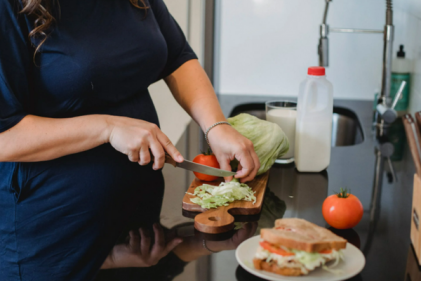Giving birth is never going to be easy and there isn’t anything you can do to 100% ensure everything will go according to plan. However, there are exercises you can do during your pregnancy that will make the birth a little less painful and prepare your body for what’s coming.
The Pelvic tilt is a simple exercise that will improve your comfort level during labour. It will strengthen your abdominal muscles which will help relieve back pain during pregnancy and labour. There are several positions you can do this exercise but on your hands and knees is best way to start.
- Position yourself comfortably on your hands and knees with your head in line with your back.
- Pull your stomach in, arch your back and hold for several seconds.
- Then relax, keeping your back flat and not allowing your stomach to sag.
- Repeat this exercise three to five times and over time work your way up to ten repetitions.
Squatting is an excellent exercise to prepare your body for birth. It strengthens your thighs and will also help open your pelvis.
- Stand facing the back of a chair and hold onto it for support.
- Position your feet slightly more than hip-width apart with your toes pointing outwards.
- Contract your stomach muscles and lift your chest while relaxing your shoulders.
- Then lower your bum towards the floor as if you were sitting down. Most of your weight should be on your heels.
- Take a deep breath and exhale, pushing into your legs as you move back up to a standing position.
The Tailor (or Cobbler) pose can help loosen your hips and open your pelvis. It can also help improve back pain and ease tension in your lower back.
- Sit up straight on the floor with your back resting against a wall. Position your feet so the soles are touching each other. (You might want to sit on a towel for a bit more comfort.)
- Press your knees down and away from each other. Do this gently – do not force them.
- Hold this pose for as long as it’s comfortable.
Many women think that Kegel exercises will help with their labour. While Kegels will not help ease pain during labour, they can speed up healing after an episiotomy or tear. They are also great for strengthening and tightening your vaginal wall muscles after birth which will improve bladder control (which might have been weakened after giving birth) and will also make sex more pleasurable. The great thing about Kegel exercises is that you can do them anywhere at anytime where your watching TV, at work or in your car.
- Tighten and squeeze the muscles of your vagina as if you were trying to stop urinating mid flow.
- Hold for four seconds and then release. Repeat this 10 times.
- Try to work up to three or four sets of these a day.
The healthier you are during your pregnancy, the easier your delivery will be so regular exercise is important. Exercises like walking, swimming and yoga are ideal for pregnant woman. Whatever exercises you choose to do during your pregnancy, it is always recommended that you have a discussion with your doctor before you start
There are also breathing exercises you can use to help ease the pain and discomfort of labour.
The childbirth Lamaze method is based on similar concept of using breathing techniques and exercises to remain calm and peaceful during delivery. For those seeking a natural birth, or simply a way to remain serene until pain medication is available, there are exercises to promote relaxation in the birthing room.
While these exercises will not eliminate the pain of labour and childbirth, it can give you something else to focus on so that the pain is not overwhelming or all-consuming. One type of exercise is called Progressive Relaxation. It involves practicing relaxation daily, including breathing slowly and visualizing your breath. Then you tense up your muscles on purpose for ten seconds and release the tension. Start at the top of your head and work down through all your muscles. This eliminates resting between contractions and makes them easier to manage. With practice, this type of breathing will come naturally during the stress and tension of childbirth.











